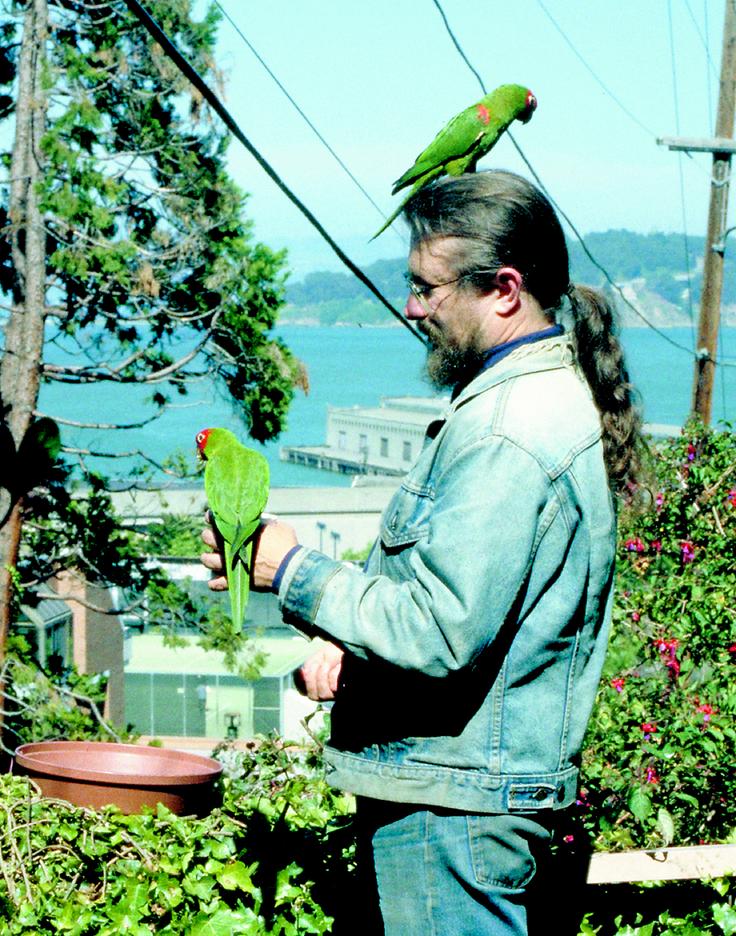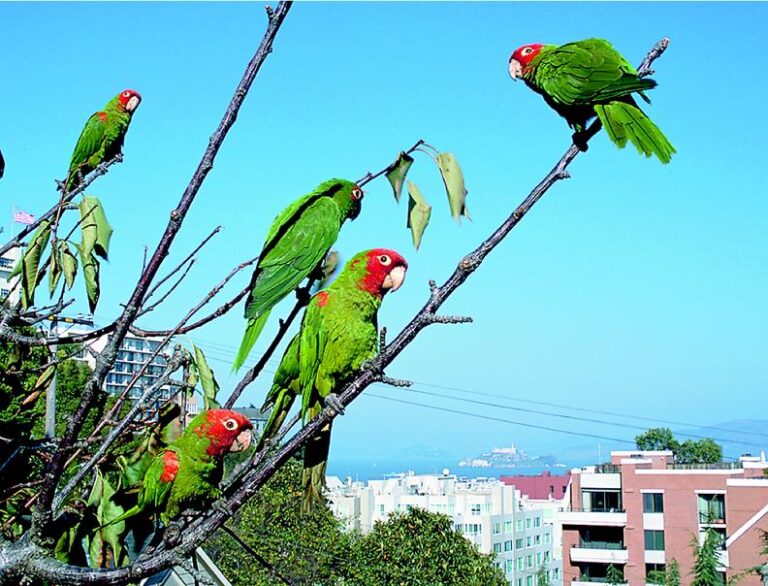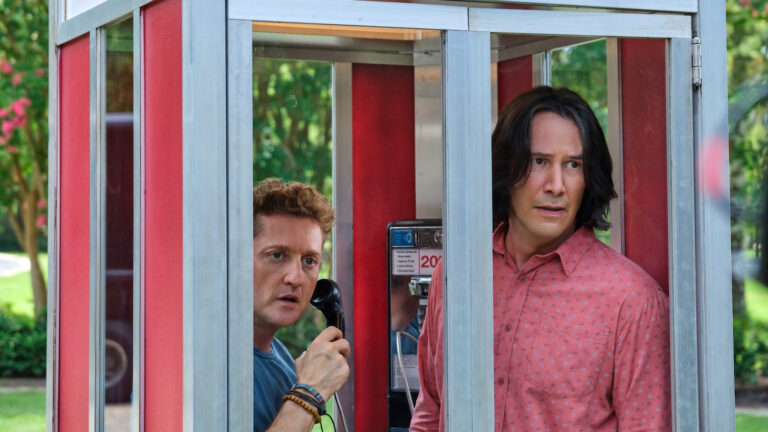The beasts in question are a flock of small mostly red-crowned conures, all escapees from human confinement, who have taken up a wild residence atop San Francisco's storied Telegraph Hill. The man in question is one Mark Bittner, a sensitive, intelligent, philosophically spoken, semi-homeless dharma bum who drifted into San Francisco at the tail end of the hippie movement looking for musical stardom. That fate eluded Bittner, and he eventually found himself caretaker of a small property on Telegraph Hill. It was there that he came face-to-face with his destiny. Following Pulitzer Prize-winning poet Gary Snyder's axiom, “If you want to study nature, start where you are,” Bittner started feeding and caring for the fiftysome birds that inhabit his lofty neighborhood. Now, years later, he finds himself a San Fran icon.
In her opening narration, our director says she was looking for a nature film that was “more personal.” She has found that and more in Bittner. As the film begins, we look at this long-haired fellow expecting some genial, animal-loving kook. But Bittner's eccentricities hardly rate in the nut-filled world of the City by the Bay. Well read, well spoken, Bittner has turned his casual hobby into a near-scientific study. Observing parrots in the wild is actually a difficult task, and Bittner is in a perfect position to catalogue their behavior, their health, their mating habits in this microcosm. That isn't to say that he's a cold observer of avian life. In fact, Bittner has names for all the birds in his flock. He even plays matchmaker for his feathered friends (who frequently mate for life), imagining elaborate romantic histories for pairs like Picasso and Sophie. And–most tellingly–he sympathizes strongly with Connor, the flock's lone blue-headed conure. Despite the fact that he's been there for at least 15 years, Conner remains the lonely outsider–much like Mr. Bittner. Bittner, it would seem, is as much a member of this oddball flock as any of the parrots; call his species the gray-headed bachelor.
Watching the film unfold, it's amazing to see the personalities that emerge from these animals. Clearly, Bittner is not just some bird brain projecting his feelings on these animals. They are, by turns, comical, sad, romantic, grumpy, joyous and more. At times, the film seems more like an anthropological study than an ornithological one. We see how these highly social birds interact with each other, how their society is structured and–most importantly–how they react to their human caretaker.
The Wild Parrots of Telegraph Hill has many layers to it. It is as much a portrait of Mark Bittner as it is a nature documentary. It is also an eye-opening look at how the world of nature and the world of man are now indivisibly intermingled. But ultimately, Irving's emotional, funny and terribly warm documentary is a love letter to animals and the people who care for them. See it with your favorite non-human.




